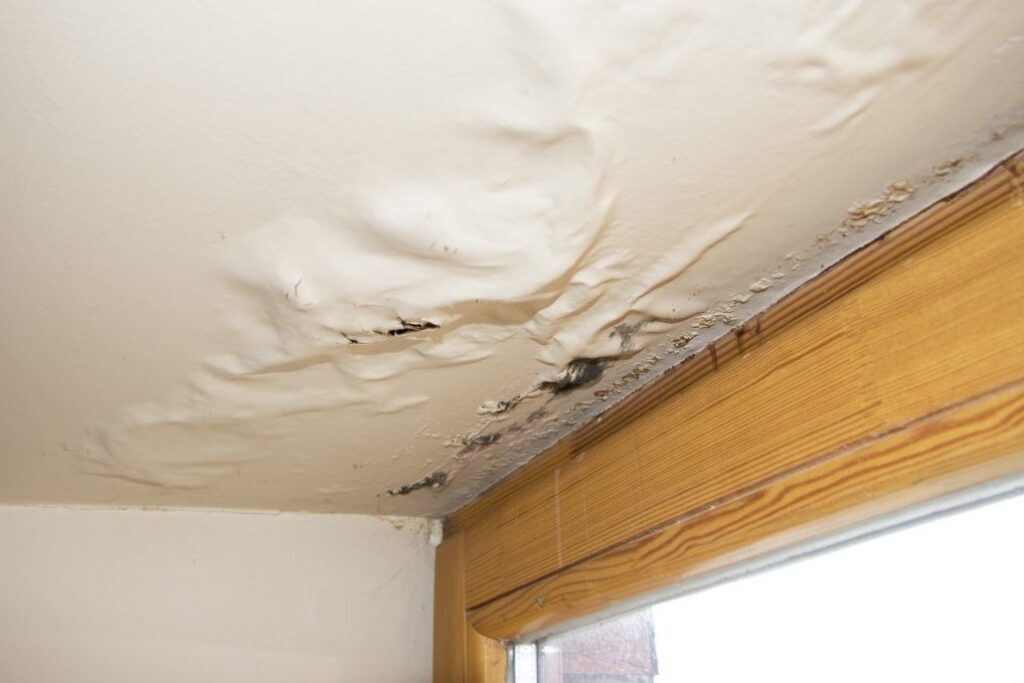

6/15Egan Ct
Belconnen ACT, 2617
0416 346 079
Give Us A Call
6/15Egan Ct
Belconnen ACT, 2617
0416 346 079
Give Us A Call
Mon - Sat: 7:00 - 19:30
We're Ready To Help
Mon - Sat: 7:00 - 19:30
We're Ready To Help


Belconnen ACT, 2617
Give Us A Call
Belconnen ACT, 2617
Give Us A Call
We're Ready To Help
We're Ready To Help

A sagging ceiling can signal a variety of issues, from moisture damage to structural problems.
Early detection of a sagging ceiling is crucial for preventing further damage and potential safety hazards.
Visual cues like cracks, gaps, and a pronounced ‘V’ shape where plasterboard sheets meet can indicate a sagging ceiling.
If you notice your ceiling sagging, it’s essential to call in a professional building inspector to determine the cause and best course of action.
Homeowners can take preventative measures, such as regular roof maintenance and avoiding hanging heavy objects from the ceiling.
A sagging ceiling is a common issue for homeowners. It can cause a lot of worry and stress. A new ceiling usually does not sag, but this may happen because of different reasons. These reasons include water damage, structural issues, or just aging. Knowing the causes, signs, and risks of a sagging ceiling can help homeowners fix the problem quickly. This can also stop further damage to their home and keep them safe.
In Australia, homes face different weather conditions. These can range from very hot summers to heavy rain. This variation can affect a ceiling’s strength. The age of a house, how well it was built, and how it is maintained matter a lot too. They can lead to a sagging ceiling.
Things like high humidity, water leaks, poor insulation, and even termites can harm ceiling structures over time. It is important for homeowners to know about these issues. This will help them take preventative measures or call for professional help if needed.
Australia’s humid climates can damage a home’s ceiling if it is not properly protected. Moisture often gathers in areas with poor ventilation, and ceilings are highly affected. Plasterboard, a common ceiling material, can easily soak up moisture, causing it to sag over time.
Also, severe weather like heavy rain can make the problem worse. If the roof has issues, like broken tiles or insufficient flashing, water can get in and collect in the ceiling area. The added weight from trapped water can put a lot of strain on the ceiling, leading to sagging.
Homeowners in areas with humid climates or frequent bad weather need to be careful. They should maintain their roofs and ensure good ventilation to stop moisture buildup and protect their ceilings.
Even without harsh weather, buildings can age and cause a sagging ceiling. Over time, the glue that holds plaster boards and plasterboard to the ceiling joists can weaken. This loss of strength, along with gravity pulling down, can make the ceiling droop slowly.
Termite damage is also a big worry for homeowners in Australia, particularly concerning white ants. Termites like to attack wooden structures, and ceiling joists are included in that. If not taken care of, infestations can harm the ceiling’s ability to hold up, leading to sagging or even collapse.
It’s important to have regular checks by a building inspector who has many years of experience spotting these problems. Taking care of any signs of damage quickly can help avoid bigger and more expensive repairs later on.
Spotting a sagging ceiling early can help you avoid big problems later. A clear dip is an obvious sign, but you should also watch for less obvious hints. These small signs can show up before the sagging gets too bad.
Look for unusual changes in your ceiling. For example, new cracks on the ceiling or where it meets the wall, doors and windows that start to stick, or nail pops on the ceiling can all be early warnings of a possible issue.
One clear sign to look for is cracks in the ceiling. These cracks usually appear where the plasterboard sheets meet, particularly if the fixings in the centre of the plasterboard sheets are compromised. They might begin as small lines but can grow larger as the sagging gets worse.
Another sign is a gap that you can see between the ceiling and the wall. This gap often runs along the cornice. It shows that the ceiling is pulling away from where it should be. You may also find that doors and windows become hard to open or close.
It’s important to remember that even small movements in the ceiling can be a problem. If you notice these signs early, you can fix them before they turn into bigger issues.
While you may see clear signs of a problem, don’t forget that sounds are also important. Your home can tell you when there is a problem through noises, and a sagging ceiling is one area to watch. Listen for strange creaks, groans, or cracking sounds, especially when there is weight on the floor above.
Common activities like walking, closing doors, or using appliances create vibrations. These vibrations can move through the building and affect the garage ceilings. If the ceiling is weak, these small sounds can become louder and noticeable.
Listening to these sounds, along with looking for visual issues, can help you understand how your ceiling is doing. If you hear any new or worsening noises, it’s important to find out what is causing them. You may also want to talk to a building expert.
A sagging ceiling is more than just an ugly look; it can be a real danger to your home and safety. If you ignore it, the problem won’t just disappear. It’ll get worse, leading to bigger and more expensive damage.
Putting off a sagging ceiling increases the risk of it completely collapsing. A sudden fall can hurt someone with falling debris and cause damage to your home. It’s essential to fix the issue as soon as possible.
Ignoring a sagging ceiling means you are overlooking a possible problem in your home. The sagging shows that the inadequate support system for the ceiling is weak or hurt. This issue can happen for different reasons, like termite damage, water damage, or just old building materials.
If you do not fix this problem, the weight of the ceiling will put more stress on the weak area, making a collapse more likely. A collapse could lead to serious results, like damaging your things or even causing serious injury if someone is there.
That is why it is important to put the safety of your home and family first by fixing the issue quickly. Talking to a structural engineer or a qualified building inspector can help you see how bad the problem is and suggest the right fixes.
A sagging ceiling can pose serious health risks due to mold and mildew growth. When moisture gets trapped in the ceiling space, it leads to sagging. This moisture allows mold and mildew to grow. These fungi do well in dark, damp areas and produce spores that can cause health problems.
Being around mold spores can lead to allergies and breathing problems like coughs and wheezing. It can also make asthma and other breathing issues worse. In more severe cases, long-term exposure can result in serious health issues.
That’s why it is important to fix a sagging ceiling. Doing so helps with structural safety and keeps your home healthy.
While small repairs at home can be done by yourself, a sagging ceiling is more serious. It usually comes from deeper problems that need a professional’s help. Trying to fix a sagging ceiling on your own without knowing the cause of the sagging can be unsafe and make things worse, as the ceiling is giving in to its own weight.
Hiring an expert has many benefits. Professionals know how to find the root cause of the sagging. They will use the right repair methods to ensure the fix lasts a long time.
While it might seem easy to fix home repairs by yourself, a sagging ceiling usually needs a professional. If the sagging is bad, affects a large area, or shows water damage or mold, the first step is to call a professional building inspector or a structural engineer.
These experts have the skills and tools to look at the problem closely. They can find out what’s causing it and suggest the best way to fix it. They will also check if the sagging means there is a bigger structural problem that needs quick action.
A professional will give you a detailed estimate of what repairs you need. This way, you can understand the costs and plan your budget for the project. Keep in mind that trying to fix a seriously sagging ceiling on your own can be unsafe and might make the issue worse, so it’s essential to ensure that the work is done to a high standard.
It is important to get help from professionals for big sagging problems. Still, you can do a few safe DIY checks and fixes for minor issues, especially those that don’t cause structural damage. Here are some steps to follow:
• Check for leaks: Look at your roof and attic for signs of water leaks. You should check for water stains or damp insulation. If you find any leaks, fix them right away to avoid further damage.
• Inspect for visible gaps: Check the ceiling for gaps or separations between the plasterboard sheets and joists. If you see loose screws or nails, you can try tightening them with a screwdriver or replacing them with new ones.
• Improve ventilation: Make sure your attic and roof space have good ventilation. This helps stop moisture buildup, which can lead to sagging.
Always keep safety in mind. If you are unsure about anything or if the sagging seems severe, contact a qualified professional.
Ignoring a sagging ceiling can cause serious problems for your home and health. Look out for visual signs or sounds; these often mean you need to act. You can either call in experts or try to fix it yourself, but it’s important to act quickly. Protect your home and those you love by taking care of ceiling issues as soon as you notice them. Don’t risk your safety. Keep an eye out for warning signs, check for risks, and do something to avoid further damage. Stay informed and stay safe.
Yes, a sagging ceiling can fall down. This can lead to serious injury and damage. If you see sagging, it is very important to fix the structural issues right away to keep everyone safe.
Ceiling repair costs in Australia can be very different based on how bad the damage is and what caused it. It is a good idea to get a detailed estimate from a skilled professional in Perth or near your location.
Some temporary fixes, like using adhesive or straps, can work. However, they are not good solutions for a long time. It is best to talk to a professional for safe and effective repairs.
Check your roof often for any leaks. Make sure there is good ventilation. Also, do not put too much weight on the joists with heavy fixings. Keeping up with maintenance and inspections can help stop sagging.
A sagging ceiling puts the safety of your home at risk, posing a risk of injury if not fixed. You should take immediate action to check how strong it is. This will help keep things safe.
Copyright ©2025